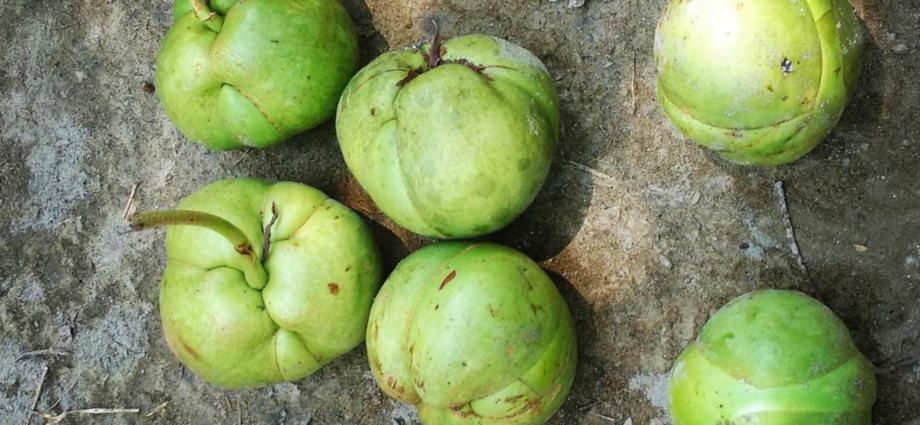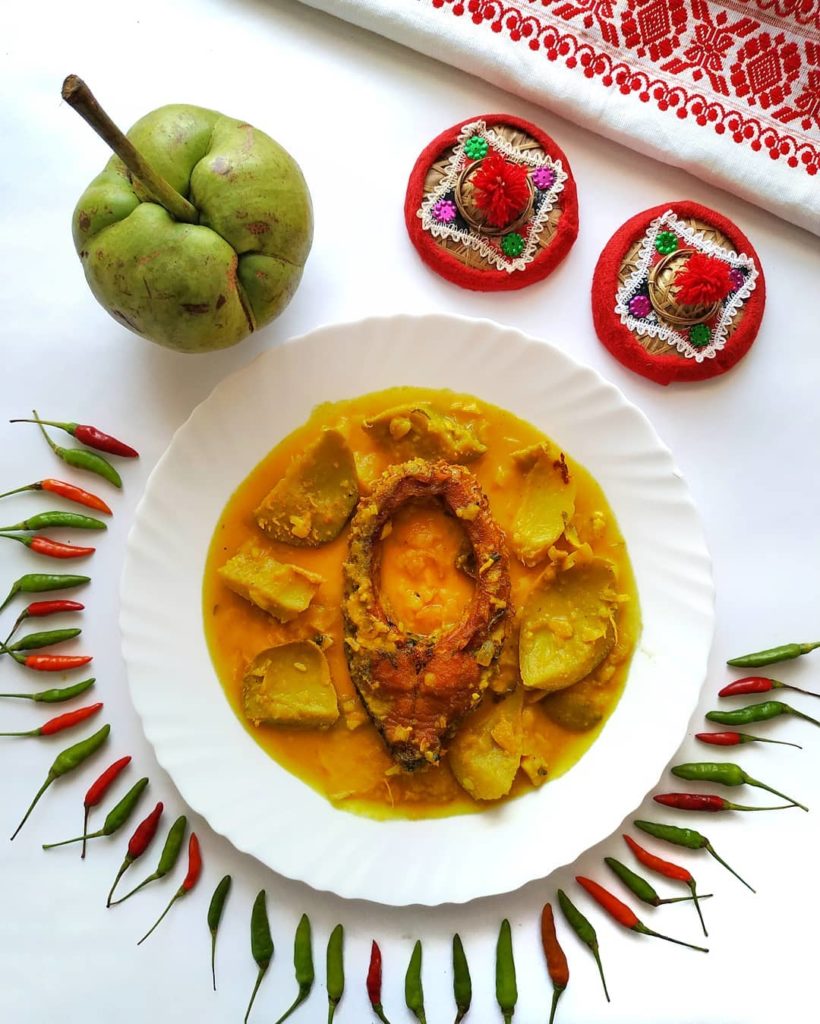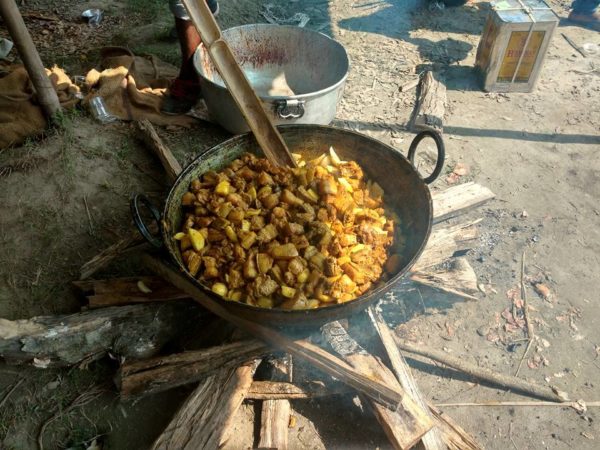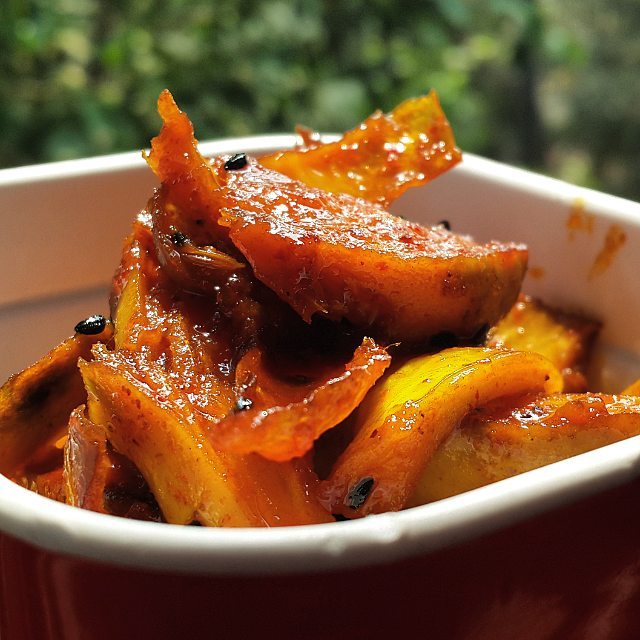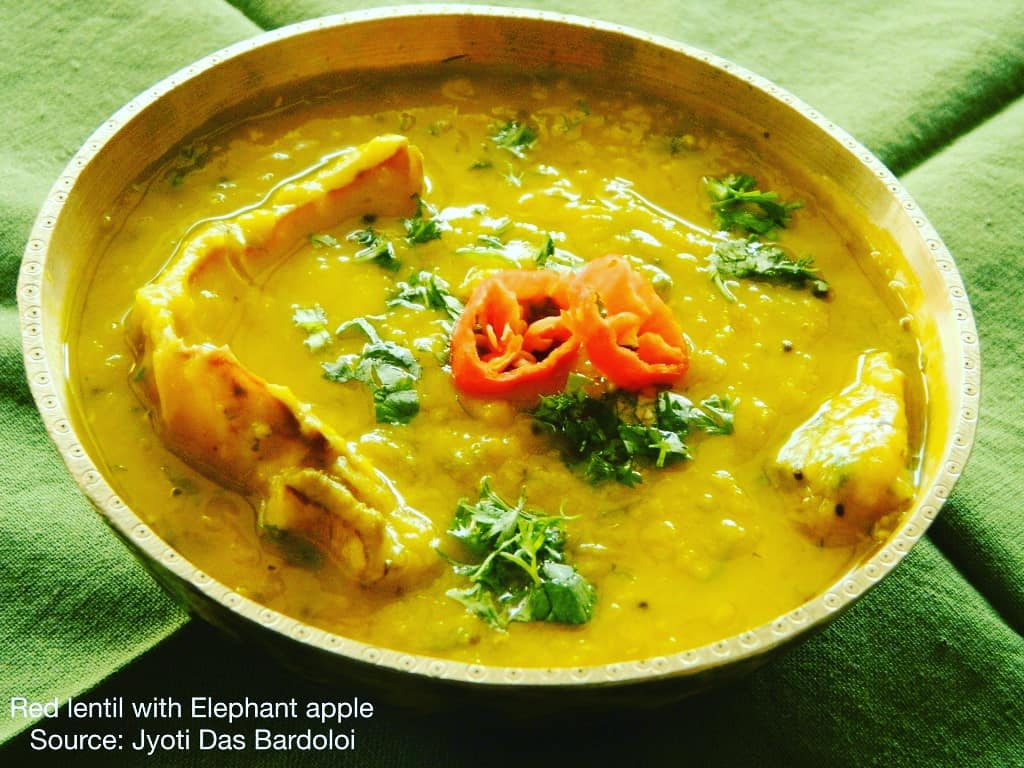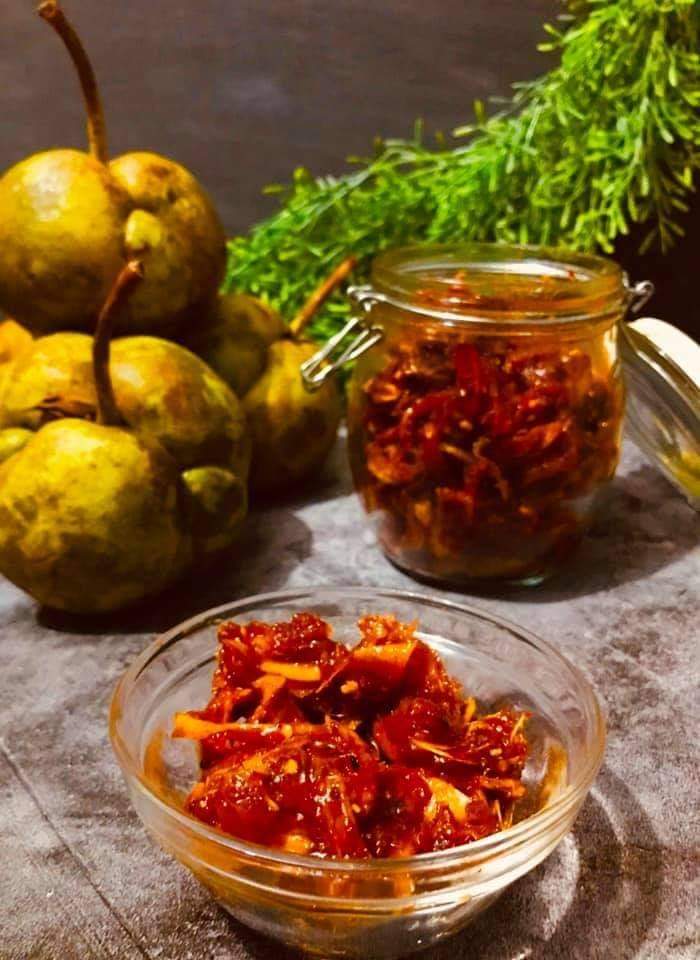Elephant apple is the English name of Ou Tenga, and it grows commonly in the tropical region of Asia. It is mildly sour in taste and very rich in minerals and nutrients. It is a seasonal fruit growing in abundance. As the fruit grows more ripe, the fiber content increases drastically. And this needs more time to boil.
It is extensively used in Assamese Cuisine across various tribes and ethnic groups of the region. Its unique aroma and mild sourness is what makes it special. Team Discover East compiles a list of traditional recipes using Ou Tenga.
1. Maasor Anja : The Assamese style Fish Curry
Maasor Tenga Anja is one of the trademark Assamese dishes and this fruit is one of the most widely used souring agents being used traditionally. It is comparatively less sour than another common souring agent of the region, the thekera.
2. Gahori Logot Ou Tenga : Pork with Elephant Apple
Pork with Elephant Apple is another very common recipe for the pork loving public of the region. Its is a very simple, rustic and easy to cook dish with only natural flavoring agents ginger,garlic and chilies. The sourness of the tenga goes very well with the pork fat.
3. Chutney : The Tangy Sweet Condiment
Chutney is often made using the young fruit, when the layers are soft and pieces soften quickly. Chop it into small pieces and heat it up with jaggery. Once the sour pieces of the fruit absorb the sweet jaggery, we have a beautiful khatta- meetha chutney for ourselves.
4. Tenga Dali : The Sour Dal
Almost all the recipes of the region are devoid of masala unlike the northern parts of the country. So one can expect a dal to be rather bland out here, and gladly be proved wrong. Add a few slices to the humble masoor dal while boiling and that is it! Mash the pieces in the dal itself, or you can bite the pieces if you want for your own tenga dali.
5. Achar : Elephant Apple Pickle
Since it is a seasonal produce, we do not have year-long access to the fresh product. So some people prepare pickles when it is available in abundance to preserve it for a rainy day. It is a very simple process involving its sun drying and then keeping it soaked in mustard oil and few other ingredients.
These were few of the traditional recipes using the Ou Tenga compiled by Team Discover East. Do share them with all the Ou lovers among your family and friends.
Feature Image Courtesy : Ghyfoodie.
